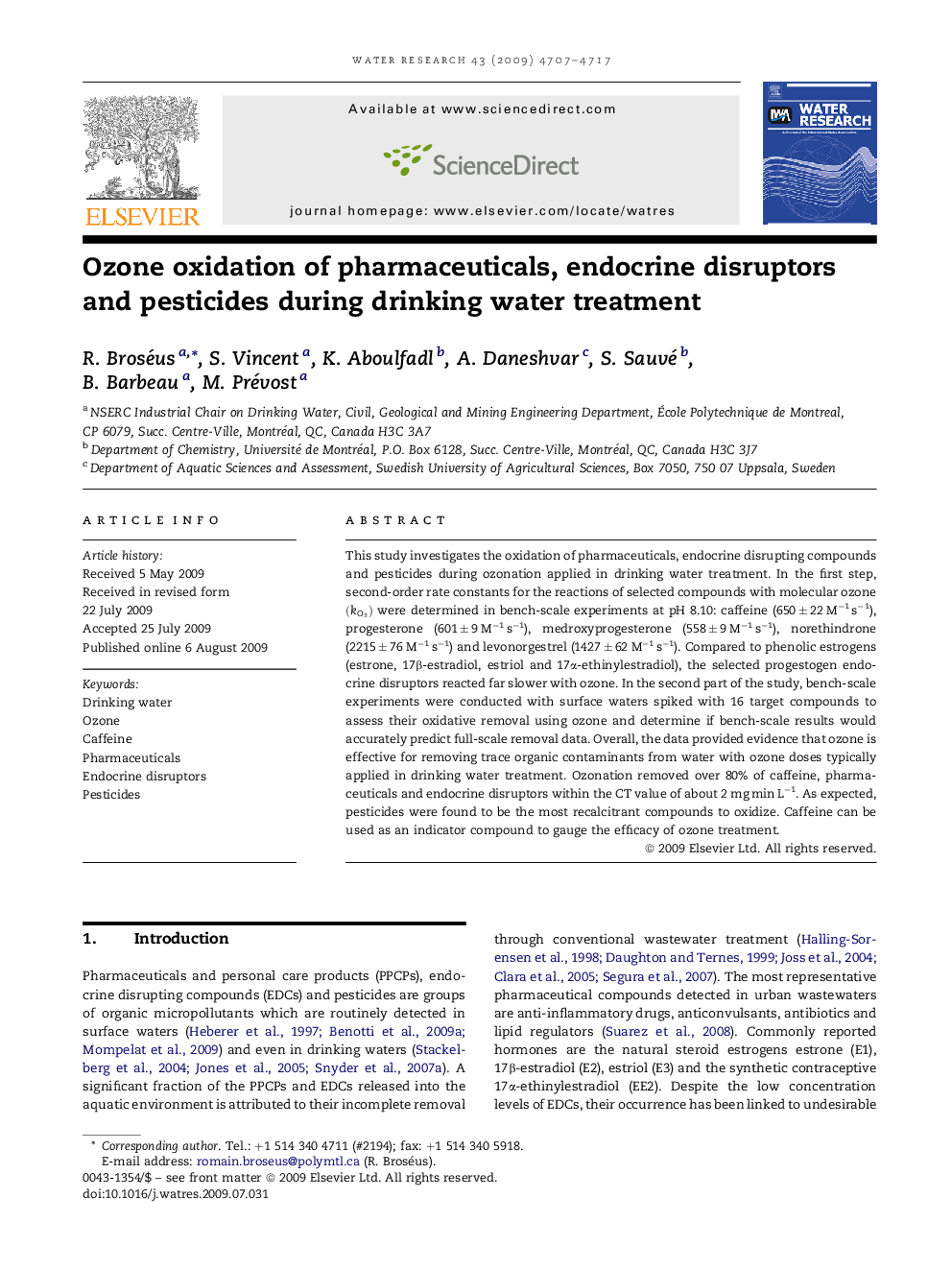| کد مقاله | کد نشریه | سال انتشار | مقاله انگلیسی | نسخه تمام متن |
|---|---|---|---|---|
| 4485520 | 1316955 | 2009 | 11 صفحه PDF | دانلود رایگان |

This study investigates the oxidation of pharmaceuticals, endocrine disrupting compounds and pesticides during ozonation applied in drinking water treatment. In the first step, second-order rate constants for the reactions of selected compounds with molecular ozone (kO3)(kO3) were determined in bench-scale experiments at pH 8.10: caffeine (650 ± 22 M−1 s−1), progesterone (601 ± 9 M−1 s−1), medroxyprogesterone (558 ± 9 M−1 s−1), norethindrone (2215 ± 76 M−1 s−1) and levonorgestrel (1427 ± 62 M−1 s−1). Compared to phenolic estrogens (estrone, 17β-estradiol, estriol and 17α-ethinylestradiol), the selected progestogen endocrine disruptors reacted far slower with ozone. In the second part of the study, bench-scale experiments were conducted with surface waters spiked with 16 target compounds to assess their oxidative removal using ozone and determine if bench-scale results would accurately predict full-scale removal data. Overall, the data provided evidence that ozone is effective for removing trace organic contaminants from water with ozone doses typically applied in drinking water treatment. Ozonation removed over 80% of caffeine, pharmaceuticals and endocrine disruptors within the CT value of about 2 mg min L−1. As expected, pesticides were found to be the most recalcitrant compounds to oxidize. Caffeine can be used as an indicator compound to gauge the efficacy of ozone treatment.
Journal: Water Research - Volume 43, Issue 18, October 2009, Pages 4707–4717